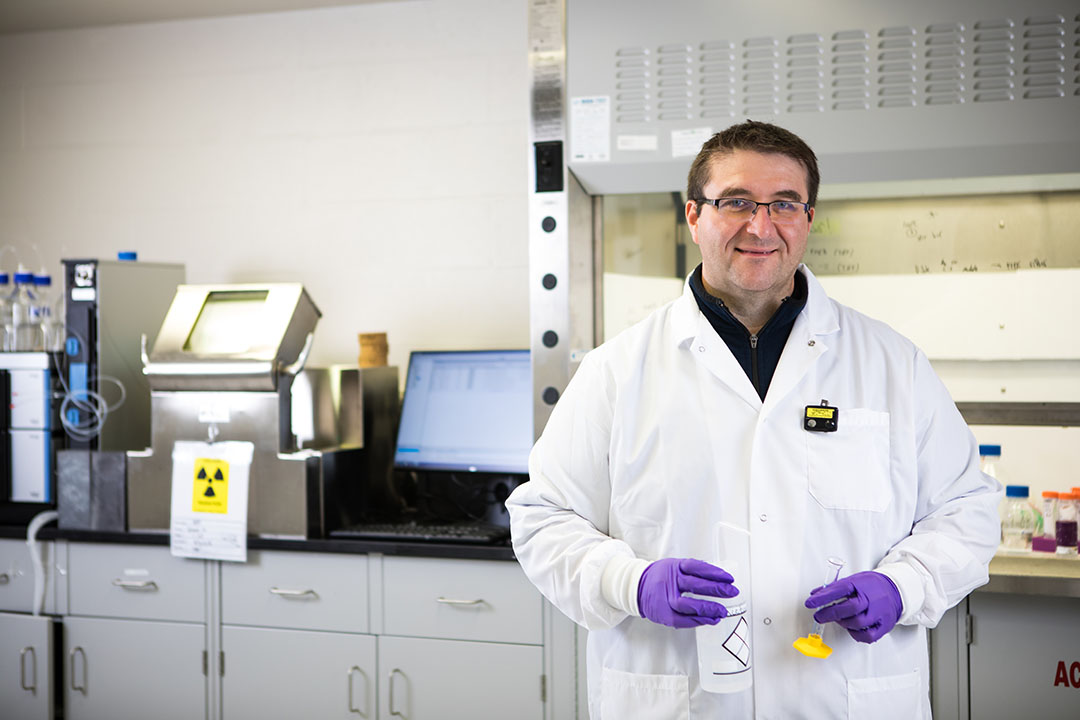
New USask radiotracers could be key for new treatments and early detection for Parkinson’s
SASKATOON – University of Saskatchewan (USask) nuclear medicine researcher Chris Phenix has been awarded US$150,000 by The Michael J. Fox Foundation to develop diagnostic radiotracers for early detection of Parkinson’s Disease, a chronic degenerative brain disorder that affects more than 100,000 Canadians. The project is eligible for supplemental funding after one year if progress warrants additional pursuit.
“Any time you can get a grant that’s this competitive, this prestigious, it shows off what we have at our university, and the world-class research that’s being done here,” said Phenix, an assistant professor in the chemistry department.
The Saskatchewan Health Research Foundation is contributing $40,000 in matching support—invaluable additional funding that enables him to proceed with the project full steam ahead, said Phenix. The goal is to produce nuclear imaging agents that researchers can use to “peer into the living brain” to better understand Parkinson’s Disease.
Phenix is using fluorine-18, produced at USask’s Saskatchewan Centre for Cyclotron Sciences, to develop radioactive tracers that selectively attach to a protein known as GCase (glucocerebrosidase) in the brain.
Post-mortem studies have shown that GCase levels drop in the brains of Parkinson’s patients including early in the disease process, making it a potentially relevant biomarker and a high priority therapeutic target. Early detection of reduced GCase levels in living brains can identify patients who would benefit from therapies designed to activate this enzyme and help identify effective new medicines, Phenix said.
There are no radiotracers currently available to image GCase despite its value. Phenix’s team aims to take highly promising compounds studied on cells in the lab, convert them to radioactively tagged tracing agents, and then use positron emission tomography (PET) to conduct imaging studies in animals. USask has the unique strength of being one of the only places in the world with the infrastructure to discover new tracers and conduct PET imaging studies on a mouse, plant, pig or human, he said.
Project members are: USask pathology professor Darrell Mousseau; Aarnoud Van der Spoel, assistant professor in biochemistry and molecular biology at Dalhousie University; research associate Shusheng Wang; and graduate student Tahira Hasan. Neurologists Ali and Alex Rajput, who have contributed greatly to Parkinson’s studies at USask, are collaborating on the project.
-30-
For more information, contact:
Victoria Dinh
USask Media Relations
306-966-5487
victoria.dinh@usask.ca

